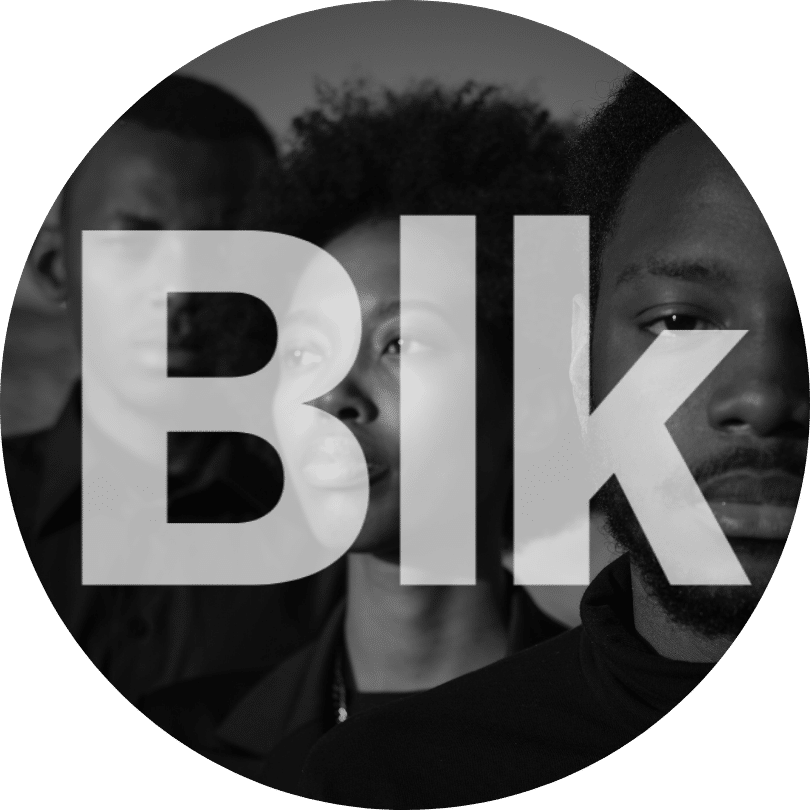Musicians have long been recognized not only for their contributions to the world of music but also for their significant influence on the fashion industry. Over the years, many artists have successfully leveraged their celebrity status to build iconic fashion empires. From creating their own clothing lines to partnering with high-end designers, musicians are shaping the way fashion is perceived, marketed, and consumed. This article explores how musicians start fashion empires, examining their journey from music icons to fashion moguls and the strategies they use to build their brands.
Read also: The Relationship Between Artists and Brand Sponsorships
Origins of Musicians in Fashion
Historical Influence of Musicians on Fashion
Music and fashion have always been intrinsically linked. Historically, musicians have been at the forefront of setting trends, influencing fashion, and defining cultural movements. Icons like Elvis Presley, Madonna, and David Bowie became known not only for their music but also for their distinctive and often avant-garde fashion choices. These musicians didn’t just follow trends; they set them, using clothing to express their unique personalities and challenge societal norms.
Iconic Fashion Moments in Music History
There are countless examples of musicians influencing fashion through their iconic looks. For example, Madonna’s “Like a Virgin” look in the 1980s with lace, layered necklaces, and oversized bows became a symbol of her rebellious spirit. Similarly, Michael Jackson’s sequined glove and red leather jacket in the “Thriller” music video became iconic fashion statements that influenced generations. These musicians used fashion to communicate their artistic identity and to connect with their fans, creating a lasting impact on pop culture.
Early Musician-Fashion Collaborations
The early collaborations between musicians and fashion houses laid the groundwork for today’s booming trend of musician-driven fashion empires. Artists like Madonna, Prince, and Run DMC began to blur the lines between music and fashion, establishing a precedent for today’s artist-driven fashion lines. These collaborations started as one-off projects but soon evolved into long-term business ventures, opening the door for more musicians to explore fashion on a larger scale.
The Appeal of Music and Fashion
The Intersection of Music and Culture
The relationship between music and fashion goes beyond aesthetics—it’s about cultural influence. Music genres often have distinctive fashion identities that reflect their unique cultural roots. For example, punk music brought about the leather jacket and mohawk hairstyle, while hip-hop fashion is known for its baggy jeans, sneakers, and gold chains. Musicians use fashion to communicate their identity, making it a natural extension of their brand.
Influence of Music on Fashion Trends
Musicians have the power to influence fashion trends by wearing specific styles, colors, and brands that resonate with their audience. When an artist wears a particular designer or sports a unique look, their fans often follow suit. This creates a direct link between the music and fashion industries, where a musician’s personal style can dictate the next big fashion trend. The influence of musicians on fashion is undeniable, as their outfits become as talked about as their latest songs.
Musicians as Cultural Icons
Beyond their music, musicians are cultural icons who influence the way people dress, behave, and think. Through their fashion choices, musicians create a narrative that shapes their public persona. These cultural icons often act as tastemakers, leading movements and influencing the youth culture of their time. As they push boundaries in both their music and fashion, they inspire their fans to embrace new looks, creating a sense of belonging and empowerment.
Building a Fashion Brand
The Process of Launching a Fashion Line
Starting a fashion empire requires more than just being a famous musician; it involves a comprehensive understanding of the fashion industry. Musicians who want to create their own fashion brands must first decide on a brand identity and vision. This includes developing a unique aesthetic, choosing the right materials, and designing a product line that aligns with the artist’s personality and message. From there, the logistics of manufacturing, distribution, and retail must be organized, often with the help of experienced professionals from the fashion industry.
Brand Identity and Target Audience
A crucial step in building a fashion empire is creating a brand identity that resonates with a target audience. Musicians must define who their clothing line is for, whether it’s geared toward high-end luxury consumers, streetwear aficionados, or budget-conscious buyers. The fashion line must reflect the musician’s image and personality to ensure that it connects with their fanbase. A strong, authentic brand identity is key to standing out in the competitive fashion market.
Developing a Product Line
Once the brand identity is in place, musicians must develop a product line that speaks to their audience’s needs and desires. Many successful musician-fashion brands, such as Kanye West’s Yeezy or Rihanna’s Fenty, started with a small collection of apparel or accessories that reflected the artist’s style and aesthetic. These lines often include a mix of clothing, footwear, and accessories, with the possibility of expanding into beauty and lifestyle products as the brand grows.
Collaborations with Designers
Partnerships with High-End Fashion Designers
Many musicians kickstart their fashion empires through collaborations with established fashion designers. These partnerships often combine the artist’s personal style with the designer’s expertise, resulting in unique collections that attract both music and fashion lovers. For example, Jay-Z’s collaboration with Rocawear or Beyoncé’s Ivy Park collaboration with Adidas has brought mainstream attention to their fashion lines, blending street style with luxury fashion.
Custom Pieces for Music Videos and Tours
Musicians often collaborate with designers to create custom pieces for music videos and tours, which further solidify their status as fashion icons. These outfits are carefully curated to reflect the theme of the song or performance, while also showcasing the artist’s personal style. Over time, these custom pieces become a part of the artist’s brand identity, leading to greater demand for similar items in their fashion lines.
Co-Branding Opportunities
In addition to collaborations with well-known designers, musicians may also engage in co-branding opportunities, where their fashion brand partners with a larger, more established company. This approach can help musicians gain access to a broader market while benefiting from the credibility of the partner brand.
The Role of Celebrity Status
Leveraging Fame and Influence for Fashion Success
A musician’s celebrity status is a powerful tool in building a fashion empire. Musicians use their fame to create buzz around their fashion brands, utilizing media coverage, interviews, and social media to promote their clothing lines. Their influence extends beyond their music, with fans eager to emulate their style. This connection between the musician’s image and the fashion brand is essential for driving sales and establishing a lasting presence in the fashion world.
The Power of Social Media in Promoting Fashion Brands
Social media has become a critical platform for musicians to promote their fashion lines. Instagram, Twitter, and TikTok allow musicians to showcase their collections, engage with their audience, and create a sense of exclusivity around their brand. Social media also allows musicians to directly communicate with their fans, gaining valuable feedback and creating a sense of community around their clothing line.
Celebrity Endorsements and Collaborations
In addition to promoting their own brands, musicians often collaborate with other high-profile celebrities to endorse fashion lines or create limited-edition collections. These collaborations can exponentially increase the visibility of a fashion brand, driving sales and generating hype. For instance, collaborations between musicians like Rihanna and luxury brands like LVMH have brought massive attention to their respective fashion lines.
Expanding Beyond Clothing
Accessories, Footwear, and Beauty Lines
Once a fashion brand is established, many musicians choose to expand their offerings beyond clothing. Accessories, footwear, and beauty products are natural extensions of a musician’s brand, allowing them to diversify their revenue streams and appeal to a broader audience. For example, Rihanna’s Fenty brand has expanded into beauty and skincare, offering a wide range of inclusive products that align with her fashion ethos.
Diversifying Product Offerings
Diversification is key to long-term success in the fashion world. Musicians can create a lifestyle brand that goes beyond clothing to include home décor, lifestyle products, and even food and beverage items. This diversification strengthens the brand’s identity, creating a more comprehensive experience for consumers who are invested in the artist’s vision.
Creating a Lifestyle Brand
Many musicians aim to create a lifestyle brand that embodies a specific way of living, much like how fashion brands like Nike or Adidas transcend their product offerings. By positioning their fashion lines as part of a larger lifestyle movement, musicians can create a deeper connection with their fanbase, ensuring their brand becomes a symbol of self-expression and cultural relevance.
Read also: The Major Differences Between Rap and R&B
Case Studies of Successful Fashion Empires
Examples of Musicians Who Successfully Created Fashion Brands
Several musicians have successfully created fashion empires, including:
- Kanye West’s Yeezy: Yeezy, known for its minimalist aesthetic and high-end sneakers, has become a dominant force in the fashion world, with Kanye West’s unique vision pushing the boundaries of streetwear and luxury fashion.
- Rihanna’s Fenty: Rihanna’s Fenty brand has made waves in both fashion and beauty, known for its inclusivity and innovative designs. The collaboration with LVMH has cemented Rihanna as a global fashion powerhouse.
- Beyoncé’s Ivy Park: Beyoncé’s Ivy Park, in collaboration with Adidas, has expanded beyond athletic wear, offering streetwear-inspired pieces that merge comfort with style.
Key Lessons from Their Success
Successful musicians-turned-fashion moguls share key traits: a strong personal brand, strategic collaborations, and the ability to connect with their audience through social media and cultural relevance. These musicians have used their influence to create fashion brands that reflect their artistic vision and resonate deeply with their fans.
Musicians who start fashion empires are not just selling clothing—they are selling a lifestyle, an identity, and an extension of their artistic vision. Through strategic collaborations, innovative designs, and the power of their celebrity status, musicians are reshaping the fashion industry and creating brands that transcend music. As the connection between music and fashion continues to grow, the future of musician-driven fashion lines looks bright, offering new opportunities for creativity, collaboration, and cultural influence.







